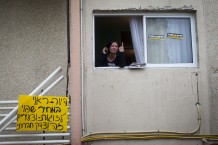The Road to Affordable Housing is Paved with Good Intentions

“Affordable housing” is an essentially social concept which is increasingly perceived to apply primarily to housing for the young. But there is room to expand the scope of this concept. This definition needs to be extended to include the needs of additional population groups, who are economically unable to purchase or rent appropriate housing, with a greater emphasis on creating mixed residential areas meant to accommodate households of diverse social and economic backgrounds.
It is difficult to ignore the importance of housing as a basic right as well as a human, social need. Appropriate housing and living environments have a notable influence on the range of possibilities and opportunities open to their residents, allowing a greater degree of access to proper infrastructure and services such as education, health and employment. Housing policy also has implications for the city’s appearance, and in fact on society as a whole. It has the power to increase or reduce social gaps, and to prevent or allow the formation of concentrations of poverty.
Indeed, many countries have developed policies that recognize the importance of the integration of groups of residents from different income levels and social backgrounds. In this way, low and moderate income households can enjoy the same variety of services and opportunities that more affluent neighborhoods offer.
In Israel, on the other hand, a more narrow and insufficient concept is crystallizing. For instance, there is a plan for a new neighborhood in Northwest Tel Aviv that includes roughly 12,000 new housing units which embodies the good intentions of promoting integrated affordable housing, while at the same time emphasizing the substantial flaws of the attitude that currently prevails.
The Tel Aviv district planning committee demanded that the Tel Aviv-Jaffa Municipality include explicit directives for the inclusion of affordable housing units in the outline plan for this neighborhood. The Municipality has shown its commitment to this initiative by offering a solution that includes, among other things, a special plot “of public affordable housing” for 360 units (out of a total of 2,160 affordable housing units in the entire plan). This proposal, however, creates a separate, highly dense, enclave of small apartments for needy people. This solution only perpetuates the same historical segregation of moderate to low income groups, with all its implications.
The detailed plan for this neighborhood was deposited recently for public objections. Its purpose is to prepare the ground for the expansion of the city’s boundaries northwards. Vibrant urban continuity, however, depends largely on varied urban fabric and on the spatial integration of different population groups. Therefore, it is of utmost importance to ensure – in advance – that the plan includes a variety of sizes of affordable housing units which will offer a wider range of housing solutions for such households.
In addition, these affordable apartments should be dispersed throughout all of the area of the plan, with reasonable and uniform density, in order to avoid the formation of neglected enclaves which would differentiate them from the other residential areas.
The decision is now in the hands of the authorities: they could settle for only having good intentions or they could instead improve the plan to ensure that affordable housing is properly included, and thereby offer a true economic and social solution for these population groups. If the latter happens, it will be the beginning of real change in Israel’s housing policy.
The writer is an architect at Bimkom – Planners for Planning Rights and a member of the Israel Coalition for Affordable Housing.
